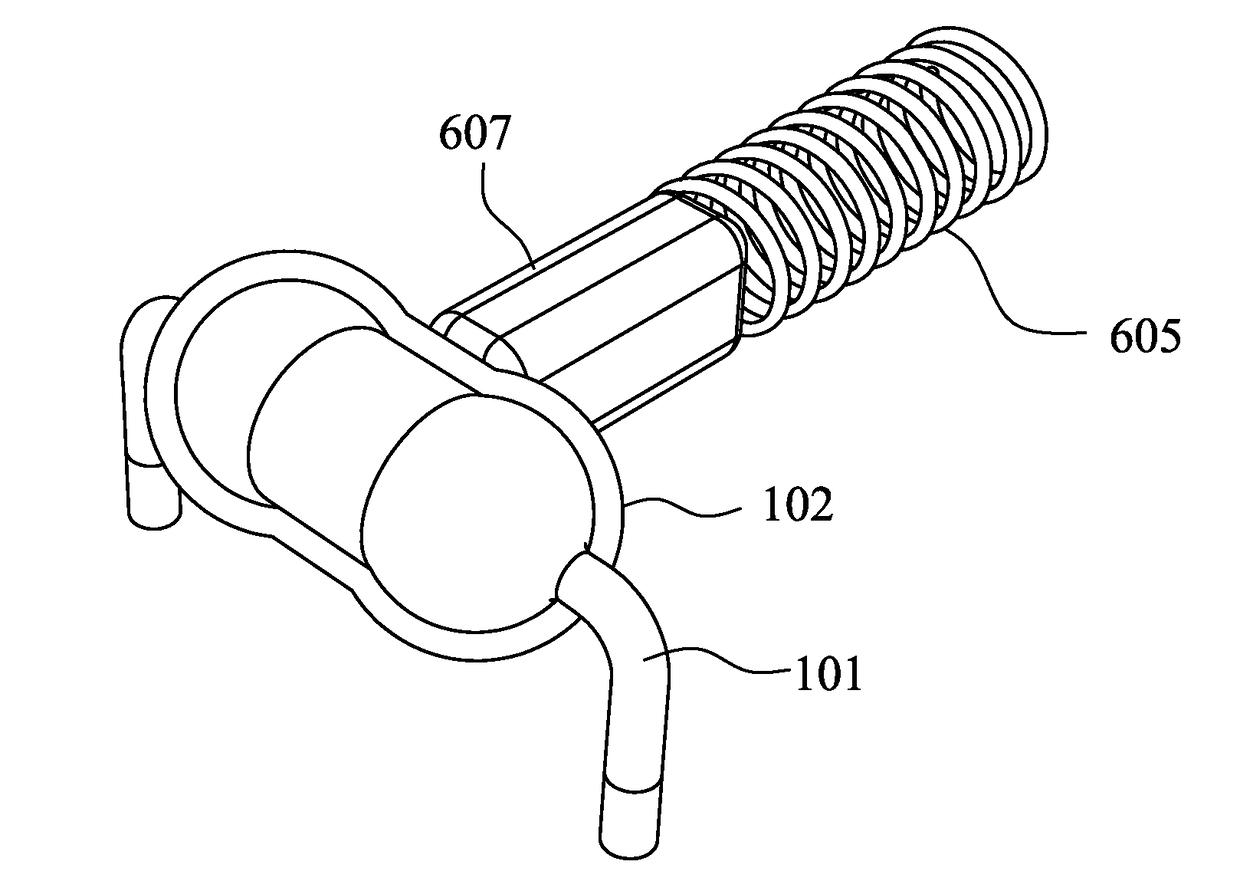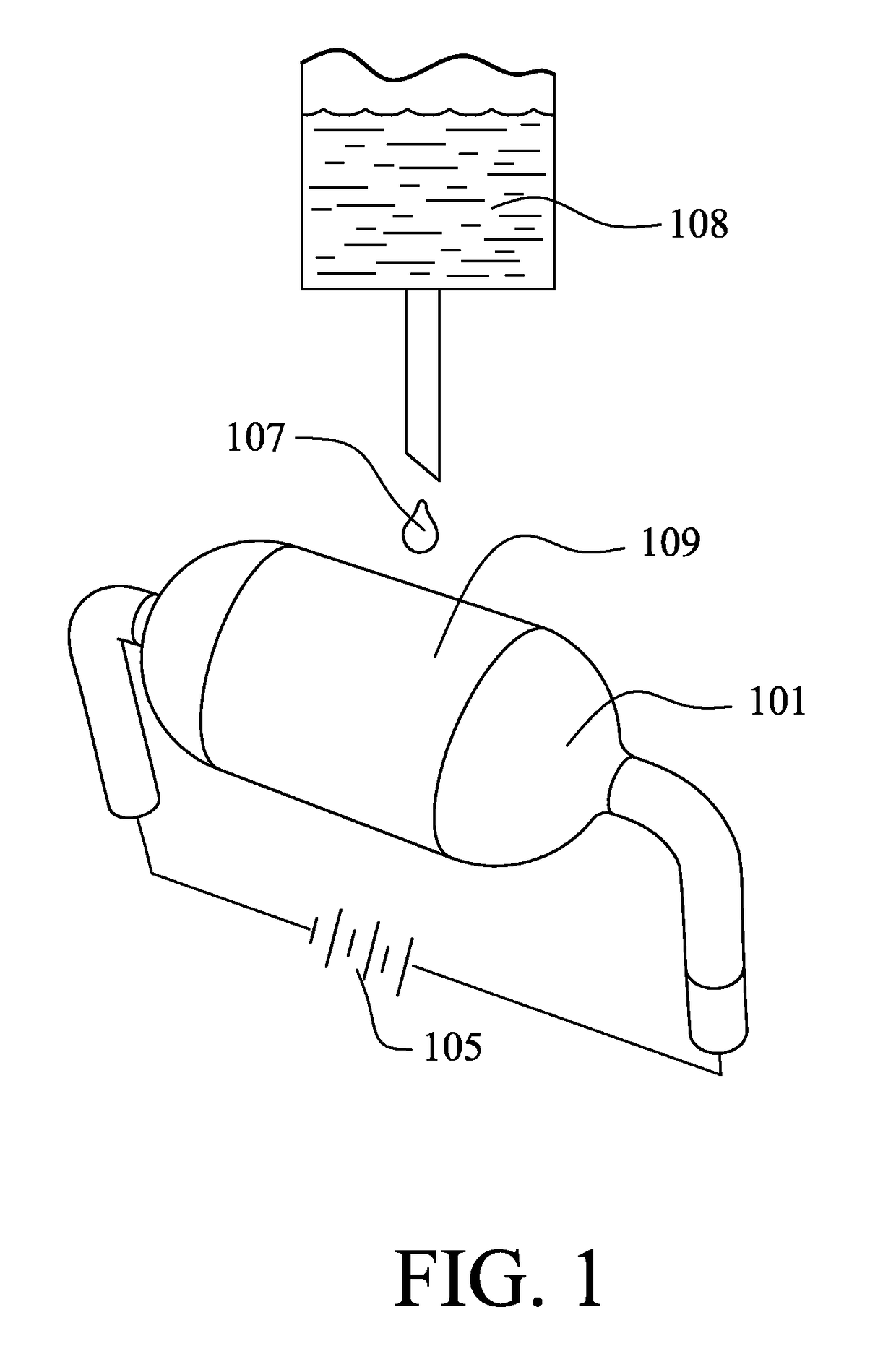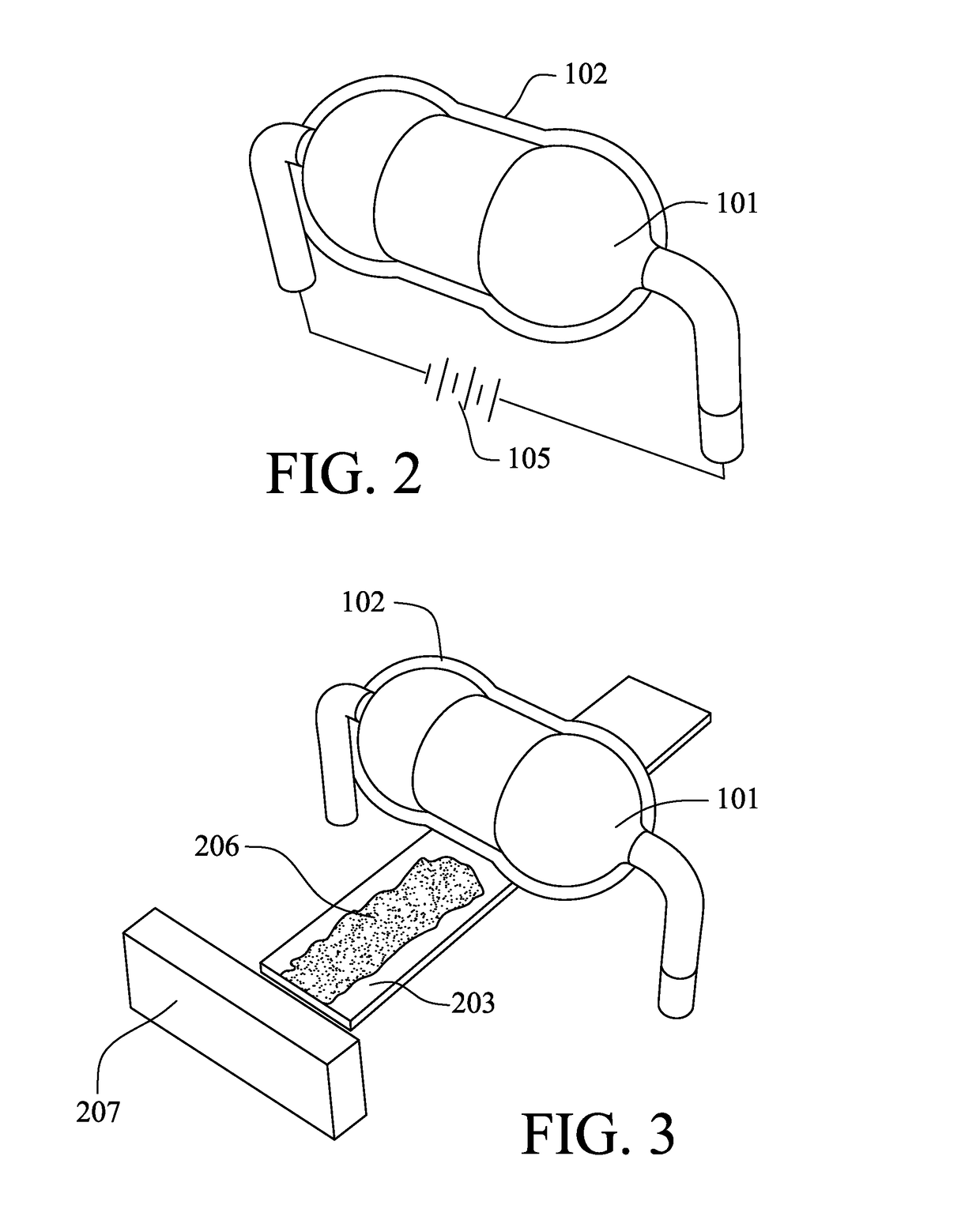Micro-vaporizer heating element and method of vaporization
a technology of heating element and micro-vaporizer, which is applied in the field of resistive heating element for micro-vaporizers, can solve the problems of excessive heat and damage to resistors, and achieve the effects of effective and inexpensive heating element, maximum electrical energy, and low power consumption
- Summary
- Abstract
- Description
- Claims
- Application Information
AI Technical Summary
Benefits of technology
Problems solved by technology
Method used
Image
Examples
Embodiment Construction
[0022]FIG. 1 illustrates a micro-vaporizer equipped with a single-structured heating element 101, such as a standard resistor with a low power rating. The heating element 101 includes a wettable surface 109 that is adapted to be coated with a thin film of a fluid or soluble solid. The wettable surface may be on the outer surface of the heating element and may have a cylindrical shape.
[0023]The wettable surface 109 may be formed of a plastic material commonly used to form the casing for electrical resistors. The wettable surface may have a texture, e.g., smooth, knurled, roughened or with capillary grooves, to promote distribution of a thin film on the surface. The wettable surface may be coated, e.g., painted, with a material that does not mix with the fluid or soluble solid. The wettable surface may hygroscopic to adsorb a liquid. For example, the wettable surface may be formed of polymers such as any or allow of nylon, ABS, polycarbonate, cellulose, poly(methyl methacrylate), poly...
PUM
 Login to View More
Login to View More Abstract
Description
Claims
Application Information
 Login to View More
Login to View More - R&D
- Intellectual Property
- Life Sciences
- Materials
- Tech Scout
- Unparalleled Data Quality
- Higher Quality Content
- 60% Fewer Hallucinations
Browse by: Latest US Patents, China's latest patents, Technical Efficacy Thesaurus, Application Domain, Technology Topic, Popular Technical Reports.
© 2025 PatSnap. All rights reserved.Legal|Privacy policy|Modern Slavery Act Transparency Statement|Sitemap|About US| Contact US: help@patsnap.com



